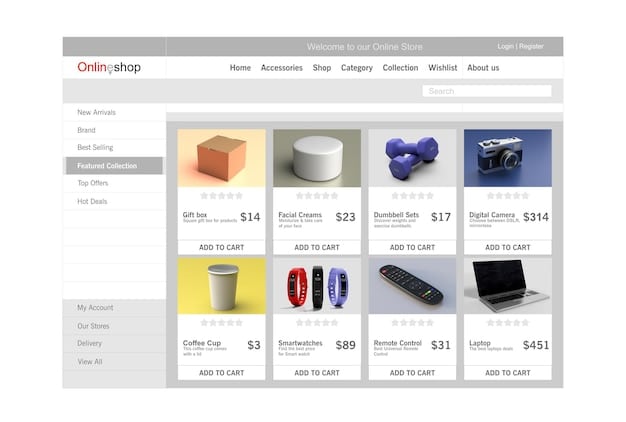Generate Passive Income: Print-on-Demand Guide for 2025

Generating passive income through print-on-demand involves creating and selling custom designs on various products online without managing inventory or shipping, making it a lucrative option for 2025.
Looking for a way to **generate passive income with print-on-demand**? In 2025, the world of online business offers numerous opportunities, and print-on-demand stands out as a particularly accessible and profitable avenue. This guide provides a step-by-step approach to selling custom products online, ensuring you’re well-equipped to succeed.
What is Print-on-Demand and Why Choose It?
Print-on-demand (POD) is a business model that allows you to sell custom-designed products without holding any inventory. When a customer places an order, a third-party provider prints, packages, and ships the product directly to the customer. This eliminates the need for upfront investment in stock and the hassle of managing fulfillment.
Benefits of Print-on-Demand
Print-on-demand offers several advantages that make it an attractive option for entrepreneurs looking to generate passive income:
- Low Startup Costs: You don’t need to invest in inventory, reducing the financial risk.
- Wide Range of Products: You can sell everything from t-shirts and mugs to phone cases and home decor.
- Flexibility and Scalability: You can easily add or remove products from your online store and scale your business as demand grows.
- No Inventory Management: You don’t have to worry about storing, packing, or shipping products.
With the rise of e-commerce and the increasing demand for personalized products, print-on-demand is a business model that is set to thrive in 2025. Plus, by automating the production process, more time can be spent on the creative side to grow visibility.

Step 1: Niche Selection and Market Research
Choosing the right niche is crucial for success in the print-on-demand business. A niche is a specific segment of the market with unique needs and interests. Selecting a profitable niche requires careful research and analysis.
Identifying Profitable Niches
When exploring potential niches, consider factors such as passion, market demand, and competition. Here are some strategies for identifying profitable niches:
- Explore Your Interests: Consider your hobbies, interests, and expertise. Selling products related to your passions can make the process more enjoyable and authentic.
- Analyze Market Trends: Use tools like Google Trends, social media platforms, and e-commerce marketplaces to identify trending products and niches.
- Assess Competition: Evaluate the level of competition in your chosen niche. Look for underserved areas or opportunities to differentiate your products.
Effective market research reduces the risk of a business failing because there is demand for it. Keep an open mind when selecting a niche, and trust data over feelings.
Step 2: Design Creation and Product Mockups
Creating high-quality designs is essential for attracting customers and generating sales in the print-on-demand business. Whether you’re a skilled designer or not, there are numerous resources available to help you create unique and appealing designs.
Design Tools and Resources
Several design tools and resources can assist you in creating custom graphics and artwork for your products:
- Canva: A user-friendly graphic design platform with a wide range of templates and design elements.
- Adobe Photoshop: A professional-grade image editing software that offers advanced design capabilities.
- Fiverr and Upwork: Freelance platforms where you can hire designers to create custom designs for your products.
When designing, remember to consider your audience and the products you’re designing for. Make sure that the size and resolution are appropriate. Always check for copyright issues and seek clarification when needed.
Step 3: Choosing the Right Print-on-Demand Platform
Selecting the right print-on-demand platform is crucial for streamlining your business operations and ensuring customer satisfaction. Each platform offers different features, pricing structures, and product options.
Popular Print-on-Demand Platforms
Several reputable print-on-demand platforms are available, each with its strengths and weaknesses:
- Printful: Known for its high-quality printing, wide range of products, and integration with popular e-commerce platforms.
- Teelaunch: Focuses on product innovation and offers a diverse selection of unique products.
- Redbubble: A marketplace-style platform that allows you to sell your designs to a large customer base without having to set up your own store.
Print-on-demand platforms are constantly being updated and developed. Check review sources and comparison sites to make an informed decision about what is right for you. Research prices, shipping areas, and the product types that are available before committing to one.
Step 4: Setting Up Your Online Store
Creating an online storefront is essential for showcasing your products and attracting customers. There are several e-commerce platforms available that can help you set up your store and manage your sales.
E-commerce Platforms
Here are some popular e-commerce platforms that integrate seamlessly with print-on-demand services:
- Shopify: A comprehensive e-commerce platform with a user-friendly interface, customizable themes, and a wide range of apps and integrations.
- Etsy: An online marketplace that caters to handmade and vintage items, making it a great option for selling unique, custom-designed products.
- WooCommerce: A WordPress plugin that allows you to turn your website into an e-commerce store.
Setting up your store means considering user experience (UX) and user interface (UI). Make things easy to navigate, because people who cannot find products are not likely to buy them. Get feedback on your store from others before going live to be sure that it is user-friendly.

Step 5: Marketing and Promotion Strategies
Once your online store is up and running, it’s time to promote your products and attract customers. Effective marketing and promotion strategies are essential for driving traffic to your store and generating sales.
Marketing Channels and Techniques
* **Social Media Marketing:** Leverage platforms like Instagram, Facebook, and Pinterest to showcase your products and engage with your target audience.
* **Email Marketing:** Build an email list and send out newsletters, promotions, and product updates to your subscribers.
* **Influencer Marketing:** Collaborate with influencers in your niche to promote your products to their followers.
Marketing and promotions can be costly, but they don’t have to be. By using the right strategies, it can effectively be free. Social media, for example, is one area where promotion is free but can bring the right eyes to your product.
Step 6: Managing Orders and Customer Service
Providing excellent customer service and managing orders efficiently are crucial for building a loyal customer base. Responding to inquiries promptly, addressing issues effectively, and ensuring timely deliveries are essential for creating a positive customer experience.
Customer Service Best Practices
Implement these best practices to provide exceptional customer service:
- Respond Promptly: Address customer inquiries and concerns as quickly as possible.
- Be Empathetic: Show understanding and empathy when resolving customer issues.
- Provide Clear Communication: Keep customers informed about their order status and shipping updates.
Good customer service is key. One problem that goes unresolved can create an exponential amount of problems for you. As a result, quick response times and good customer service is likely to have your customers coming back again and again. Don’t forget to ask them for referrals.
| Key Point | Brief Description |
|---|---|
| 💡 Niche Selection | Choose a specific market segment to target. |
| 🎨 Design Creation | Develop unique and appealing designs for your products. |
| 🛒 Store Setup | Create an online storefront on platforms like Shopify or Etsy. |
| 📣 Marketing | Promote your products through social media and email marketing. |
Frequently Asked Questions
▼
Print-on-demand is a business model where products are only printed when an order is placed, eliminating the need for inventory.
▼
Consider your interests, analyze market trends, and assess the competition to find a profitable niche for POD.
▼
Popular choices include Printful, Teelaunch and Redbubble. Research and choose one based on features and budget.
▼
It depends on your effort and niche. Income is scaled with how much you market.
▼
While competitive, POD is not entirely saturated. Niche down and work hard to create a business that stands out.
Conclusion
Generating passive income with print-on-demand in 2025 requires diligent planning, niche selection, design creation, strategic marketing, and exceptional customer support. By following this step-by-step guide, you can establish a successful online store and harness the power of print-on-demand to achieve your financial goals.





